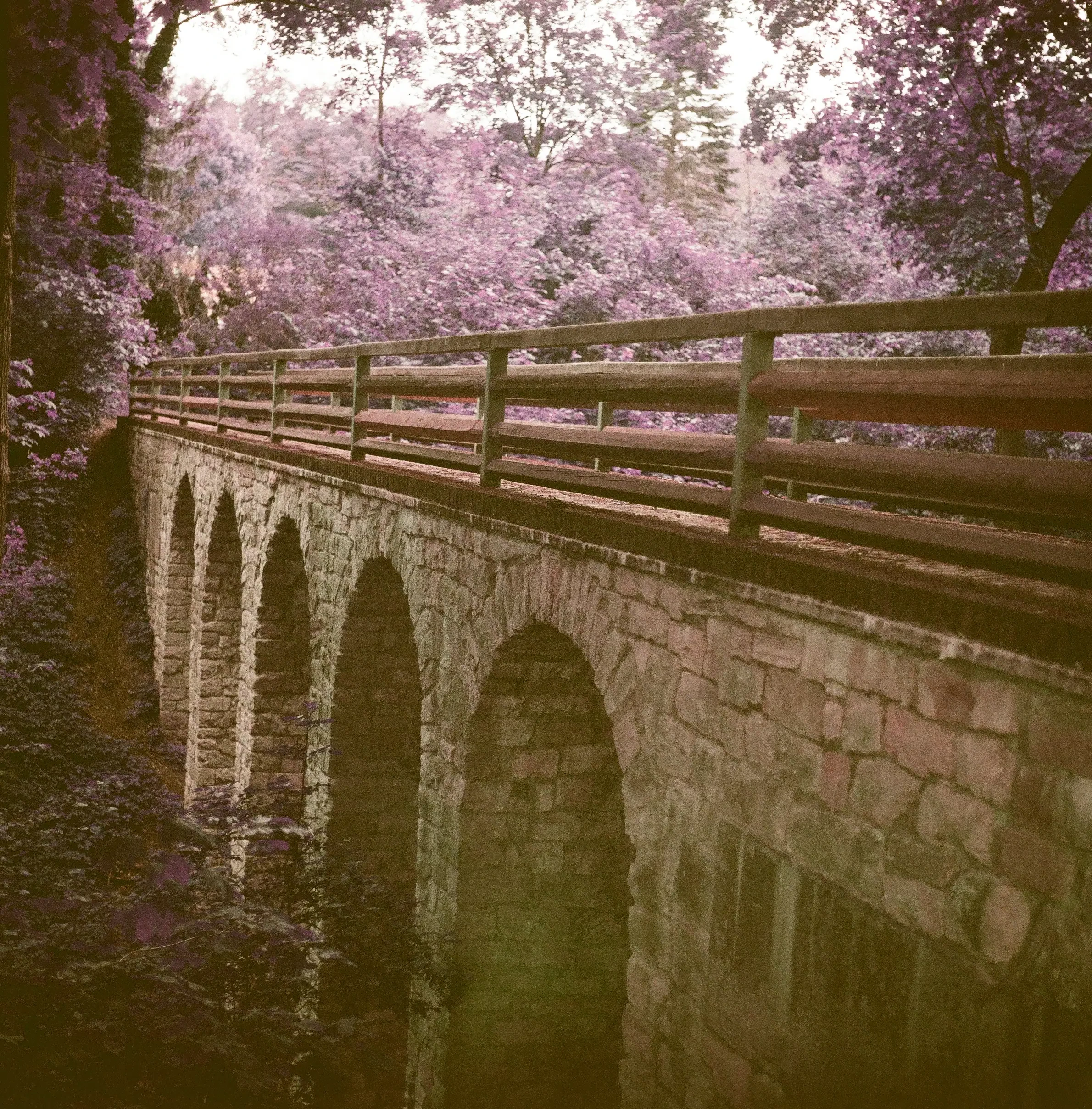The devils bridge

I love the farie effect of the Lomochrome Purple film which which gives the devils bridge a more magical feeling. Maybe i can visit the devils bridge again in winter when the swampy ground is more walkable due to the cold and take some shots from below.
It also has an interesting history: The bridge is arching over the “Teufelgraben” and is not that far away from the old firing ranges in Katharinenholz. The surrounding area was swampy and when it strongly rained the Bornstedter Lake was likely to overflow. The drain or “Teufelsgraben” was build in 1786 and helped to direct the overflowing water into the Golmer Luch.
The bridge over the drain was built for pure practical reasons. The soldiers from the Potsdam garrison often marched from the Potsdam castle to the fields of Bornstedt. The bridge was meant as a shortcut and built in 1844 from Rüdersdorf limestone. At that time, Wilhelm IV wanted to have another park created between the Crown Estate and Lindstedt Palace and commissioned Peter Joseph Lenné with the landscape planning. The king’s favourite architect Ludwig Persius designed the bridge as a five-arched Roman viaduct. Six years before, another bridge was built for Wilhelm’s brother in castle Glienicke - also called Devils bridge.
Although it was planned for practical reasons, the bridge suited the bigger plans of Wilhelm IV. He wanted a big landscape park in style of an english garden. It also seems that he didn’t wanted to see military during his rides. What could be better than guiding soldiers through the forest, far away from the public eye. The plans for the near “Ruinenberg”1 also show that the military was again and again removed from the hill, so that the panorama was not ruined from military buildings (that was also the reason why the firing ranges in Katharinenholz got expanded. They were on the Ruinenberg before).2
However, the park was never laid out as planned and Wilhelm IV. died in 1861 so he never saw the results. The Teufelsgraben also lost his meaning because the water from Lake Bornstedt flows into the Lindstedt drainage through a clay pipe underground since 1891.
-
There is an interesting text about that history in “Gartenkunst in Bornstedt” by Clemes Alexander Wimmer in the book “Krongut Bornstedt - Eine Bau-und Nutzungsgeschichte”. ↩︎